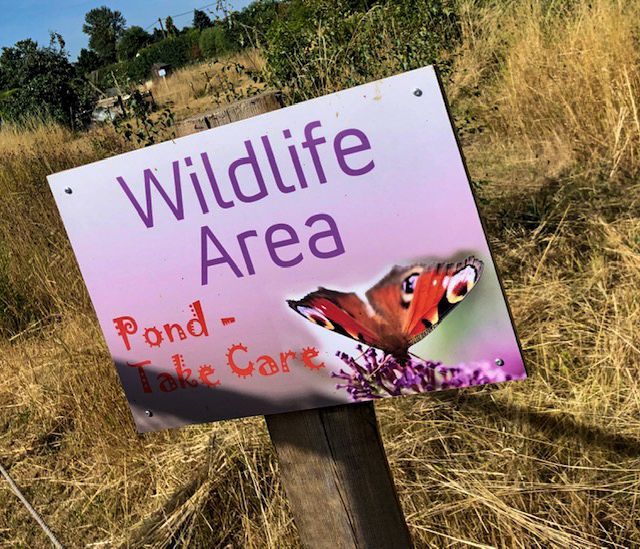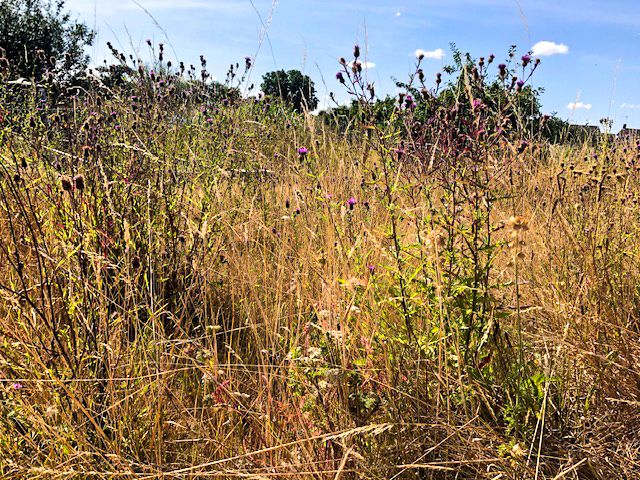Creating a meadow area from neglected grassland

Advice from Dave Musson, based on many years' practical experience.
Many UK public amenity areas have suffered over the years from cheap, fast grass cutting, which leaves all cuttings on the ground. These cuttings rot down to benefit existing fast growing grass species to the detriment of weaker grasses and broad leaved plants.
The result of this form of management is a sward made up of fast growing grass species. These outgrow weaker grasses and most of the wildflowers that would otherwise form a good biodiverse meadow and leaves only the tall, lush grasses that require extra cuts each season.
The following method has been proven to reverse this process and produce a species rich sward that needs less mowing.
- Choose the plot.
- This needs to be small enough to manage. Preferably with a well defined boundary.
- Ask ourselves- “Can we put a tree on the plot?” We have a selection of trees to plant in the next few years so tree planting should always be a consideration.
- Mow off all top growth and take away the cuttings. This will remove some of the surfeit of nourishment in the grass we take away. It will also begin to prepare for sowing in Autumn.
- Carry on with this with the mower set as low as possible as often as needed till planting time in Autumn.
- Prepare the ground. We are looking for at least 50% bare earth in which to sow seed. This may mean extra mowing, as close to the ground as possible.
- Next, scratch the whole of the prepared ground until we have a shallow seed bed.
- The method depends on the soil at the time. We found a combination of 3 tined hand cultivator, followed by a lawn rake or sometimes a garden rake repeated several times from different directions produced a really good seed bed.
- Sowing. This is best done by hand. The difference in size and weight of the different seeds means extra care needs to be taken when hand broadcasting. An old Wok or similar enables ones` hand to reach to the bottom of the seed mixture thus the heaviest seeds do not stay till last. Two passes at 90% to each other works very well.
- Pressing down. The seed needs to be in contact with the soil but not covered over so it now needs to be pressed into the soil.
- Feet are traditional for this. Several pairs of feet trampling in unison will do an excellent job.
- It is also possible to sow two seed mixtures. One will consist of Annuals associated with ancient cornfields. These will grow up and flower in year one and will provide cover for the permanent pasture that will develop underneath. This is a well known tried and tested method of establishing the sort of mixture we are hoping for.
- Once established, it is unlikely to grow very tall and should only need to be cut once a year

